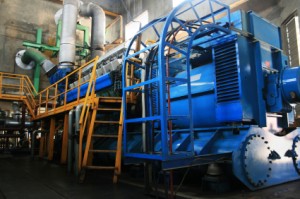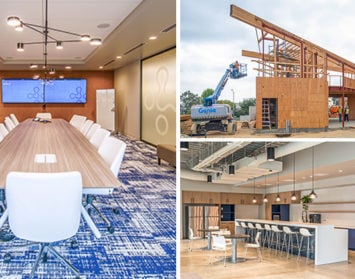Second in the Project Design Elements Series

If a function of your business requires the need for an emergency back-up generator, it will have a large impact on your next real estate transaction. Special considerations for a generator must be accounted for during building selection as well as the design, construction and maintenance of your new space, and it is important to have a qualified project manager assess your emergency power needs early in the process.
Building Selection and Design Considerations
The purchase of a generator is a large capital investment and can cost up to hundreds of thousands of dollars. Care should be taken to ensure that the design will suit both your current and future emergency power requirements. Increasing the size of the generator down the road will not only require the replacement of the generator itself, but may also require changes to the feeders, breakers, Automatic Transfer Switch (ATS), transformers and uninterruptible power supply (UPS).
In addition to properly sizing a generator, the decision to install the generator set inside or outside of a building will affect the design, specification and cost of the generator. Protection from the elements, sound attenuation, fuel storage and refueling access, ventilation and access for maintenance must be considered. Local jurisdictions will govern the requirement for sound attenuating covers, the maximum amount of fuel storage and allowable runtimes for the generator. All generator installations in San Diego County will first need approval from the Air Pollution Control District of San Diego County.
Construction and Maintenance
Generators and the associated equipment will typically have a long lead time for fabrication once the design documents are approved. These typically range between 10 and 12 weeks, so priority should be given to the shop drawing and submittal process. After construction is complete, the generator must be tested and serviced regularly to ensure continuous operation during a power fluctuation or outage. It also requires both maintenance and re-fueling contracts.
Alternative Solutions
In some cases, critical data storage functions can be relocated to offsite facilities and may eliminate the need for an onsite emergency generator. These facilities are specifically constructed for continuous 24/7 operation including redundant power and HVAC systems and also allow for greater scalability. If you are considering this option, you should do so as early as possible because it can reduce the overall required square footage as well as the projected construction costs for your new space.
Hughes Marino’s industry leading Construction Management team has unmatched expertise in every type of commercial building project from tenant improvements to ground-up build-to-suits. With decades of experience in California and beyond, our project managers, engineers and LEED APs offer practical insights for the construction management professional.









